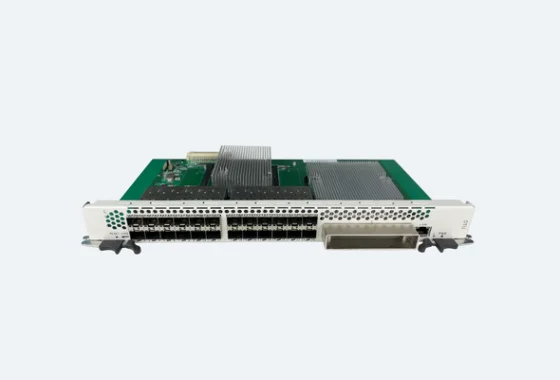Unlocking the Future of Optical Networks: The Power of Muxponder DWDM Technology
In today's hyper-connected world, the surge in data traffic is unprecedented. From streaming services to cloud computing, the Internet of Things (IoT), and the deployment of 5G networks, the demand for faster and more efficient data transmission is pushing the limits of existing telecommunications infrastructure. Optical networking has emerged as the backbone of this digital revolution, with Dense Wavelength Division Multiplexing (DWDM) being one of the most critical technologies driving this transformation.DWDM allows for the transmission of multiple data channels over a single optical fiber by utilizing different wavelengths of light, thereby dramatically increasing the capacity of the network without requiring additional fiber. At the center of this technology is the muxponder, a device that aggregates and optimizes data streams for transmission across these channels. This article WDMLight delves into the complexities of muxponder DWDM technology, exploring how it works, its impact on modern networks, and the future innovations that will continue to shape the telecommunications landscape.
The Basics of Muxponder DWDM

At the heart of DWDM technology lies the ability to multiplex multiple data streams onto a single optical fiber by using different wavelengths (or channels) of light. This enables the transmission of vast amounts of data over long distances without the need for additional fiber infrastructure, making DWDM a cost-effective solution for expanding network capacity. A key component in this process is the muxponder DWDM, a device that aggregates multiple input data streams, typically in the form of lower-speed client signals, and combines them into a single, higher-speed optical signal. The muxponder DWDM operates at the network's edge, serving as a bridge between client equipment and the DWDM system, ensuring that data is efficiently packed and transmitted across the network.
The Role of Muxponder DWDM in Modern Networks
As telecommunications networks have grown in complexity and scale, the role of muxponder DWDM technology has become increasingly important. Muxponders contribute significantly to the efficiency, scalability, and reliability of these networks, making them indispensable in modern telecommunications.
Increased Bandwidth Efficiency
One of the most significant advantages of muxponder DWDM technology is its ability to maximize bandwidth efficiency. In traditional optical networks, each data stream might require its own dedicated fiber. However, with DWDM, multiple data streams can be transmitted over the same fiber, each on a different wavelength. The muxponder aggregates several lower-speed data streams into a single high-speed optical signal, making full use of the available bandwidth. This is particularly beneficial in situations where the expansion of physical infrastructure is impractical or too costly.
Cost-Effective Network Expansion
With the explosion of data traffic, network operators are under constant pressure to expand their networks. However, laying new fiber is expensive and time-consuming. Muxponder DWDM technology offers a more cost-effective alternative by increasing the capacity of existing fiber. By enabling the transmission of multiple data streams over a single fiber, muxponders reduce the need for additional infrastructure, thereby lowering both capital and operational expenses. This makes it easier for network operators to scale their networks to meet growing demand without incurring excessive costs.
Scalability and Flexibility
Scalability is a crucial feature of modern networks, especially in a rapidly changing digital environment. Muxponder DWDM technology offers exceptional scalability, allowing network operators to add or remove channels as needed without major overhauls to the existing infrastructure. This flexibility is essential for adapting to changes in traffic patterns, such as during sudden surges in data demand or the introduction of new services. Additionally, muxponders are compatible with a wide range of client interfaces and data rates, ensuring that they can accommodate various network requirements and future-proof the infrastructure against emerging technologies.
Improved Signal Quality and Reach
Long-haul networks, which are often used to connect distant cities or countries, face significant challenges related to signal degradation over distance. Muxponder DWDM technology addresses this issue by employing advanced signal processing and error correction techniques. These techniques help maintain signal integrity over long distances, ensuring that data can be transmitted without significant loss or distortion. Moreover, the use of optical amplifiers within DWDM systems allows for the extension of transmission distances, making it possible to establish high-capacity links across continents.
Simplified Network Management
Managing a large-scale optical network can be complex and resource-intensive. Muxponder DWDM technology simplifies this process by consolidating multiple data streams into a single manageable signal. This not only reduces the complexity of network monitoring and troubleshooting but also streamlines the overall management process. Network operators can more easily identify and resolve issues, optimize traffic flow, and maintain high levels of service quality with less effort and fewer resources.
In today's rapidly expanding telecommunications landscape, where data traffic is soaring, efficient, high-capacity, and reliable network infrastructure is crucial. Muxponder DWDM technology is at the forefront of this evolution, offering a scalable solution that meets current demands while laying the foundation for the future.As optical networks grow, muxponders will become increasingly vital, enabling seamless data transmission by aggregating multiple streams, optimizing bandwidth, and maintaining signal integrity over long distances. The advancement of muxponder DWDM technology will be key in supporting emerging technologies like 5G, AI, and quantum communications.
In conclusion, integrating muxponder DWDM technology into optical networks is not just a technical move but a strategic business decision. To meet the demands of a data-driven world, this technology will be essential in delivering the next generation of high-performance networks that drive global connectivity and economic growth.
https://www.wdmlight.com/OTN-Muxponder
www.wdmlight.com
WDMLight
Post Comment